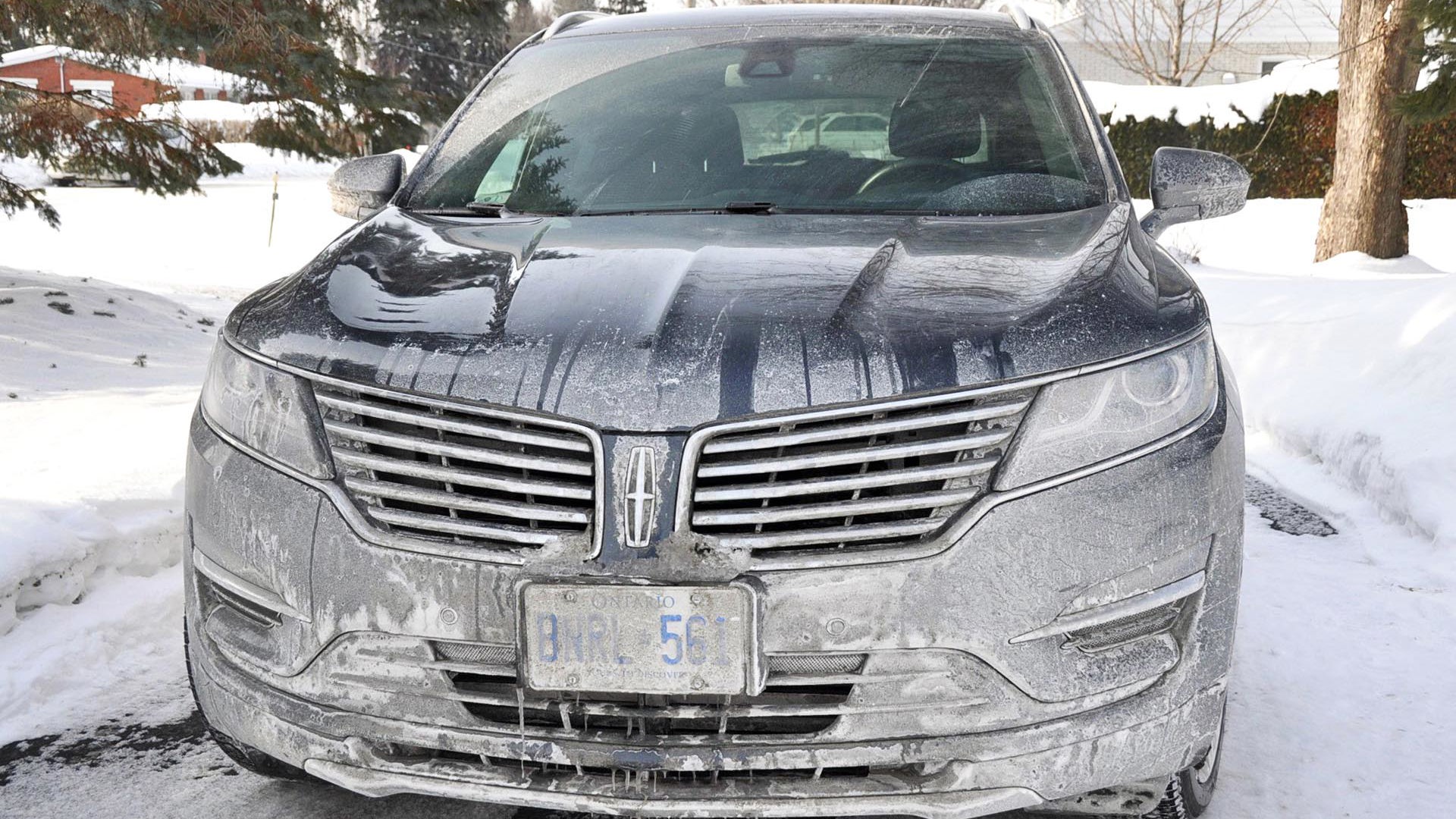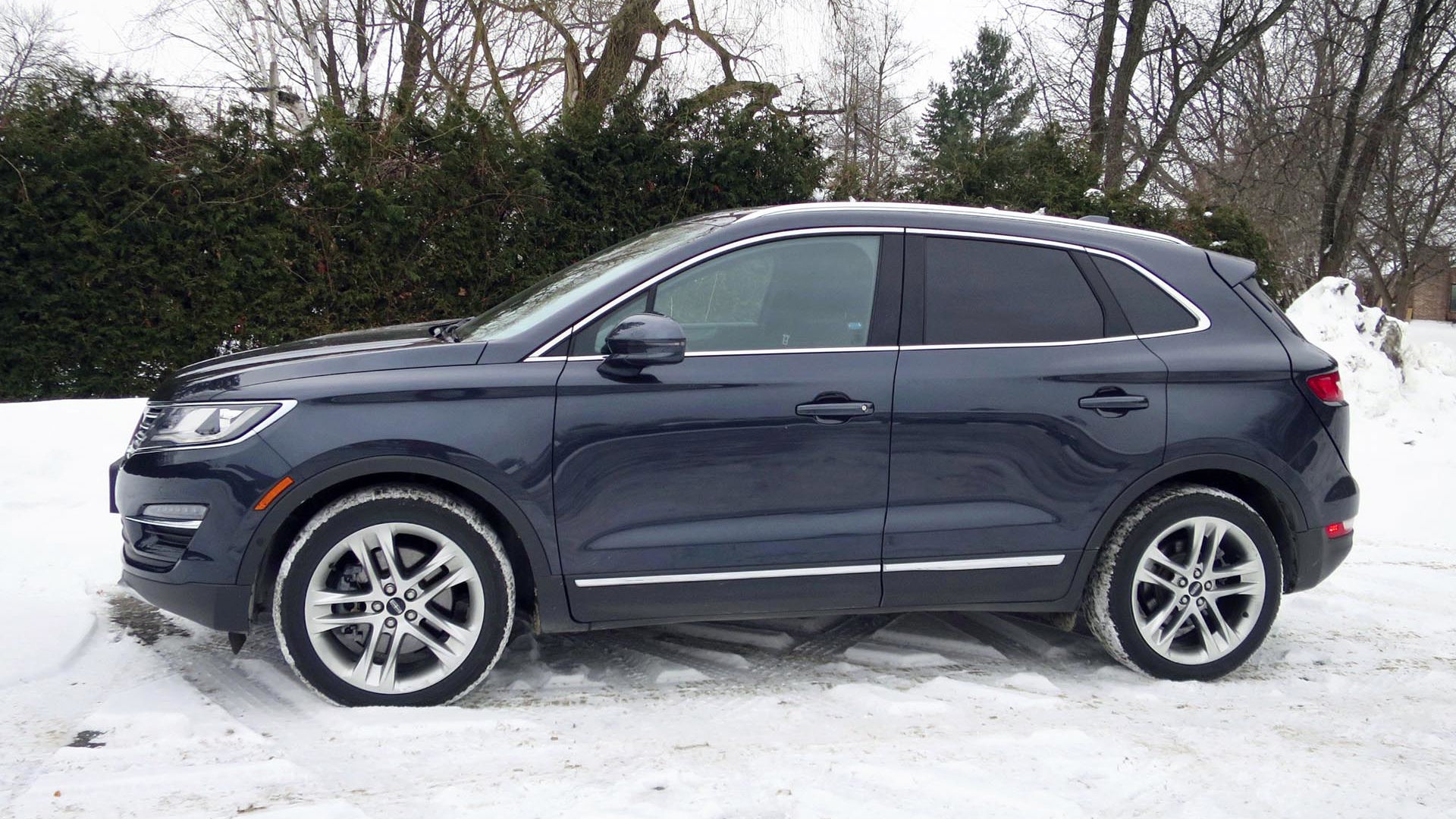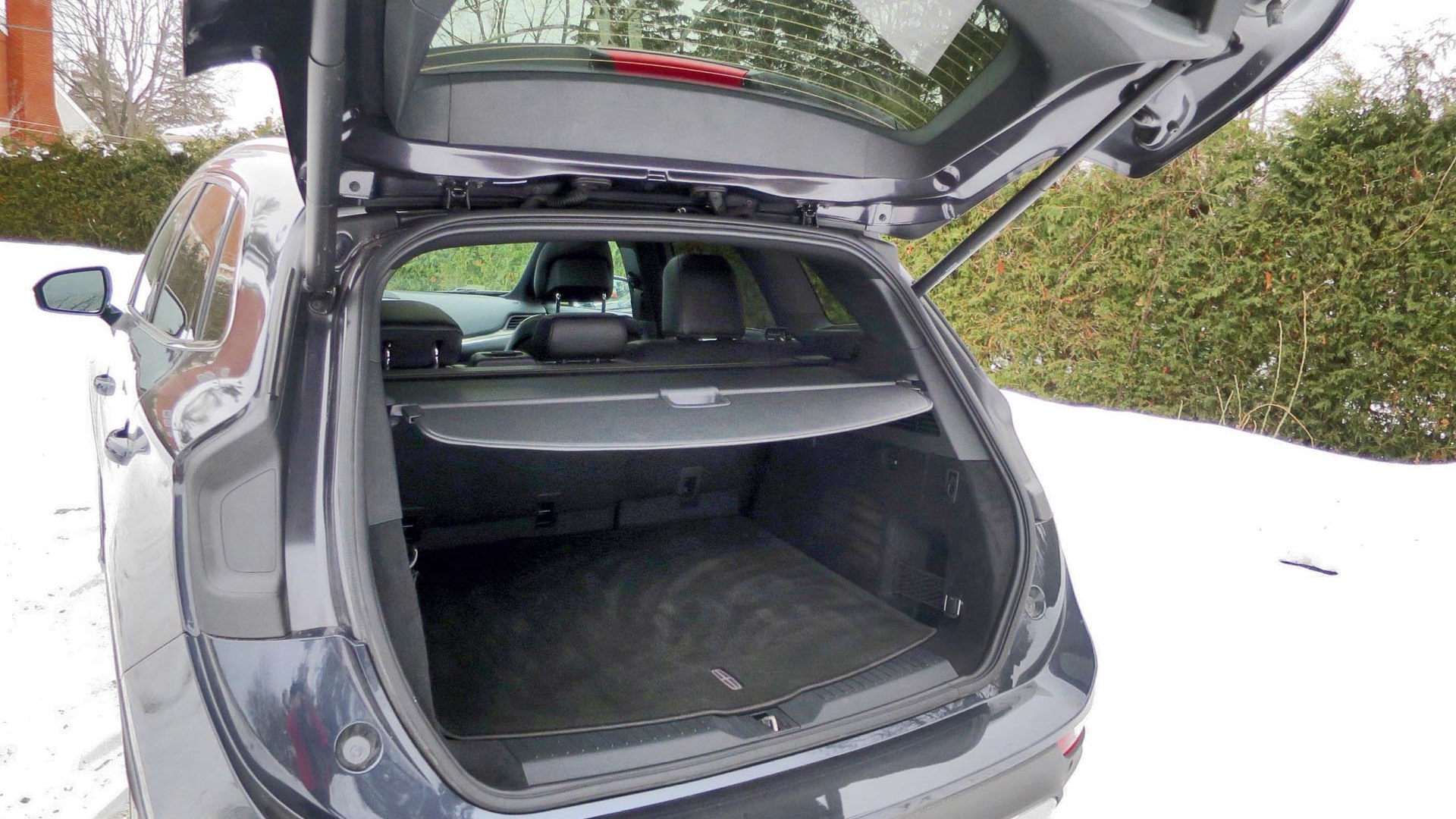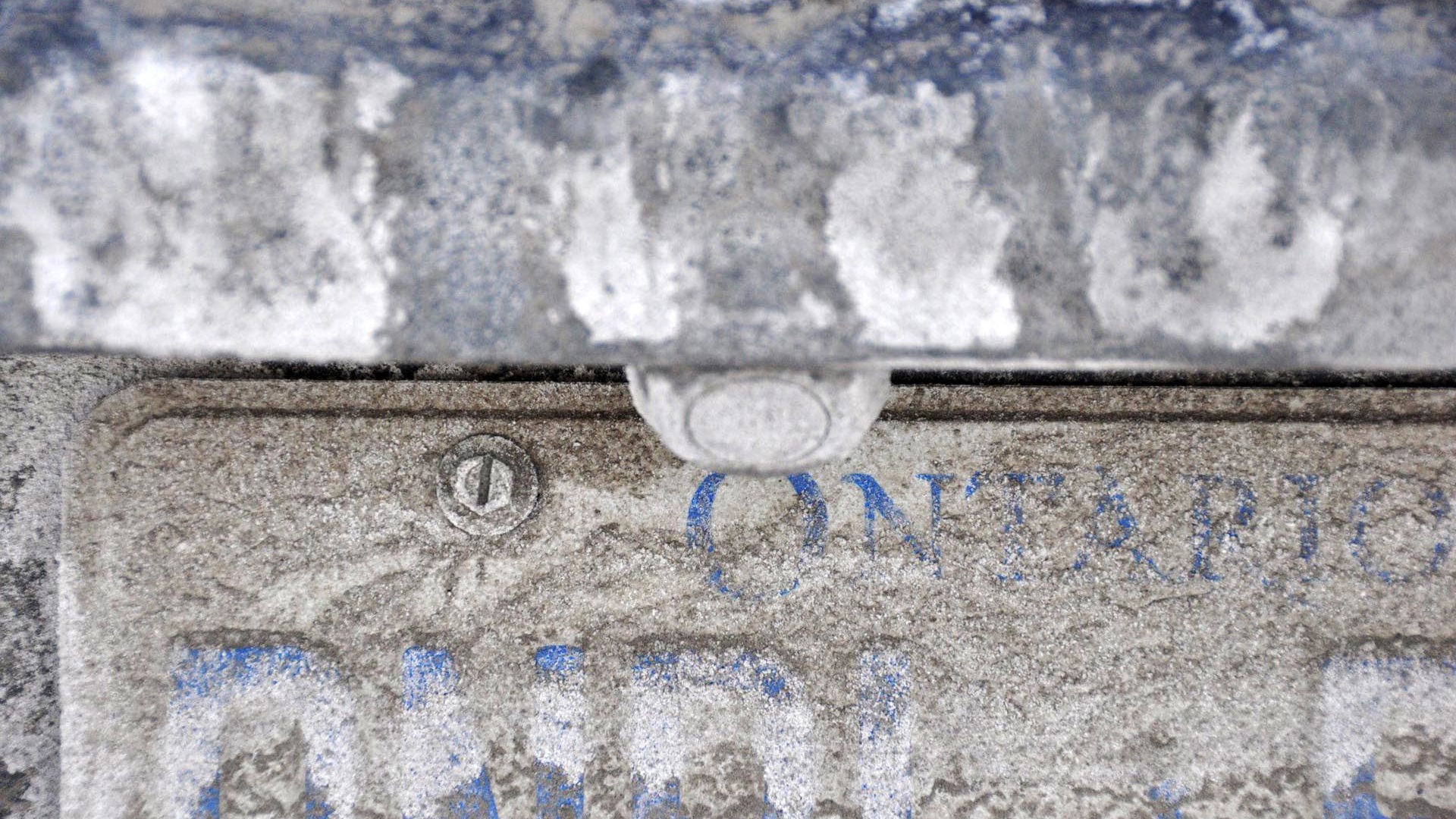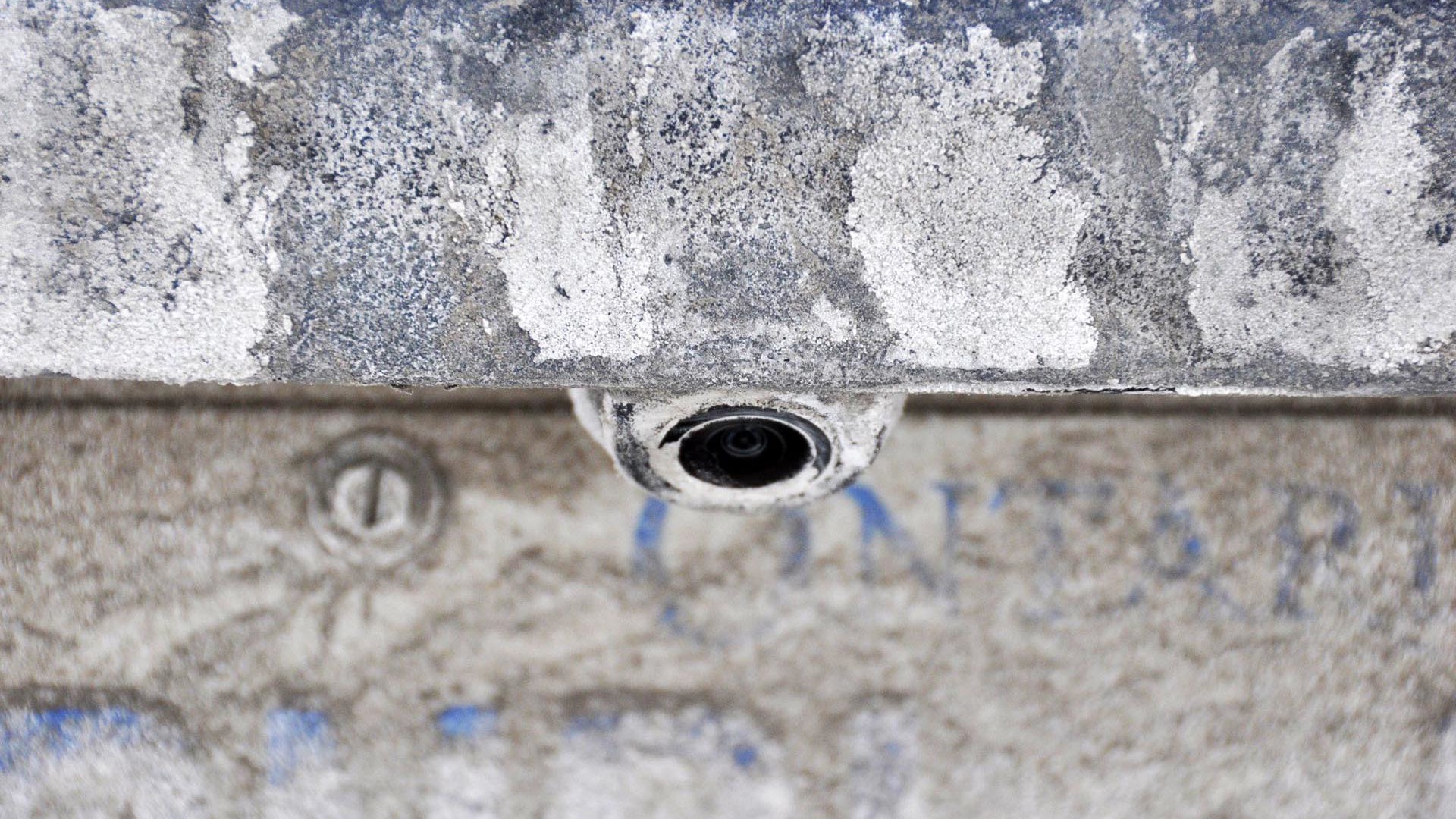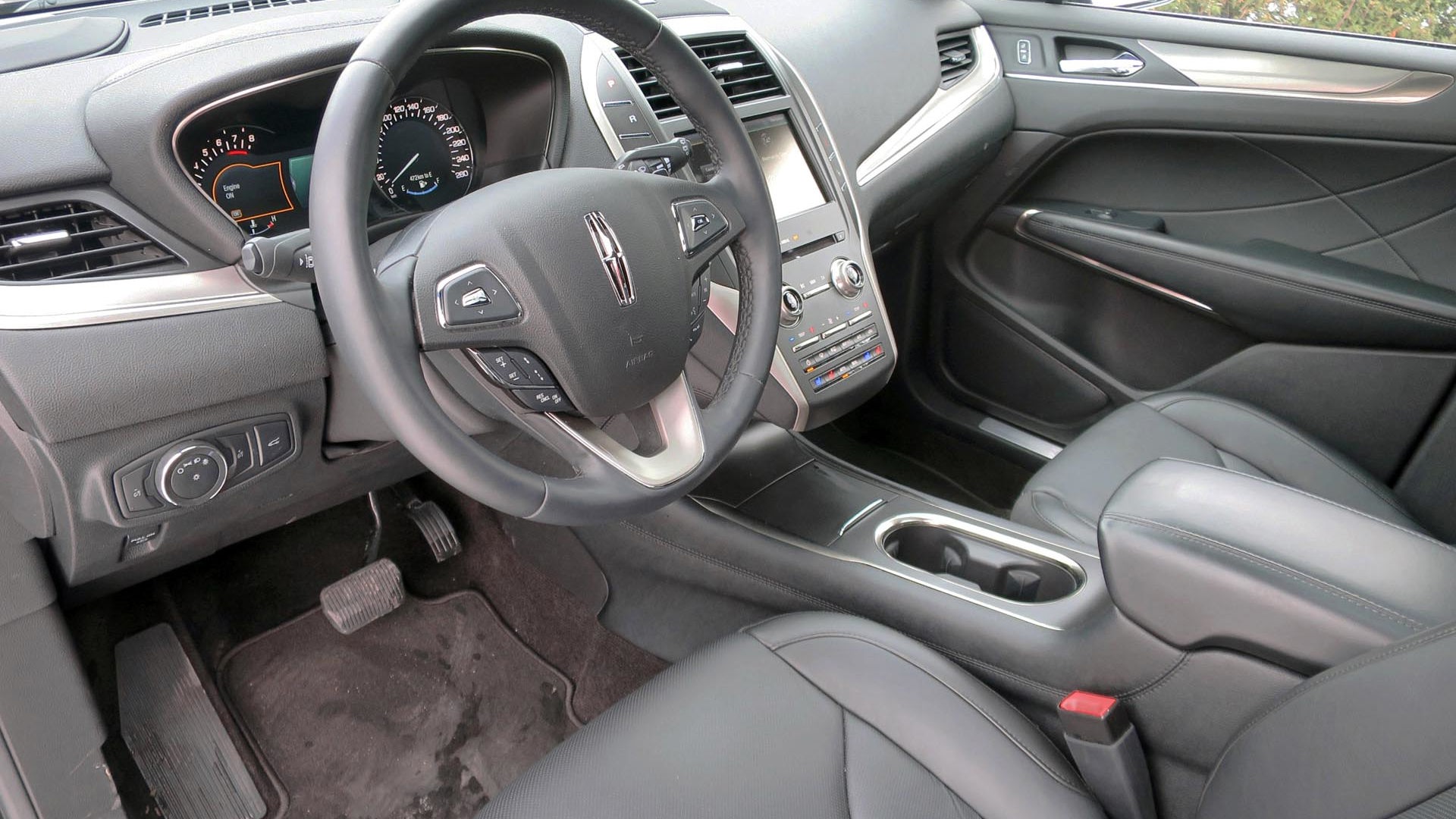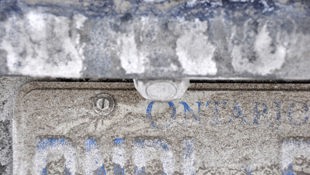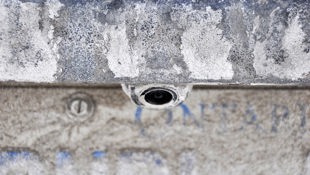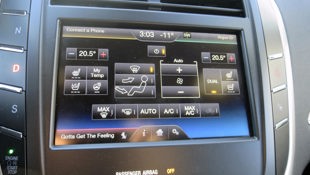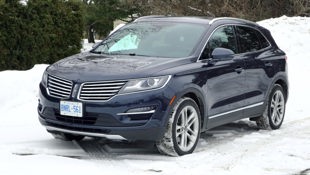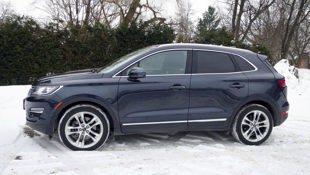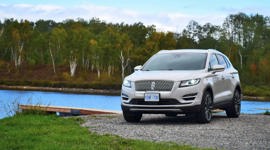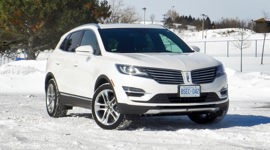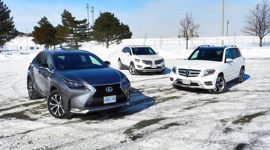It’s been a tough time for the 2015 Lincoln MKC. Actually, it’s been tough for any vehicle this winter, what with the almost continuous “Extreme Cold” warnings from Environment Canada and the unrelenting ice and snow challenging many Canadian drivers this year.
On the plus side, the Lincoln has not failed to start, and after a sympathetic 30-second warm-up, trudges off into the almost Arctic conditions without complaint. The six-speed automatic transmission shifts readily, there’s no unexpected noise from the engine, the steering doesn’t feel appreciably heavier than it does in warmer temperatures and the all-wheel-drive system pulls it through deep snow and slush without issue. It’s a trooper! You can rely on it.
It’s been tough for any vehicle this winter, what with the almost continuous “Extreme Cold” warnings from Environment Canada and the unrelenting ice and snow challenging many Canadian drivers this year.
Where I am finding some inadequacy is in the ancillaries. Even after warming up, for instance, the defrost system struggles to keep the windshield and front windows clear of fog or frost. Yes, I’ve had to scrape the side windows and sometimes the inside of the windshield on occasion as the defrost system, even set to maximum, has been left wanting in competition with the extreme cold outside the glass. We’re talking in the minus 25 to minus 30 range; very cold, but not unusual in my part of the world (Ottawa).
Similarly, the heated seats take forever to warm, and when they do, even set on “high,” they don’t do much beyond soften the leather upholstery. That could be due to my posterior, come to think of it.
Other winter foibles I’ve noticed are that the “hands-free” foot-operated liftgate soon stops working as debris builds up under the car, leaving you standing on one foot behind it, laden with groceries, waving the other foot under the bumper like an idiot as the liftgate seems to willfully ignore you.
Likewise the lens for the rear-view camera is quickly covered in spray from the messy winter roads. When it’s clean, it’s great, but it’s located just above the licence plate with no protection from the elements. Recently I drove the new Mercedes-Benz GLA and its rear camera is located in the same place, but it features a little motor that pivots the camera in order to protect it when not in use. The image inside the vehicle, therefore, is always bright and clear. Lincoln should feature such technology.
Similarly, the headlights get dirty but the Lincoln lacks the washers found on many of its competitors, and the adaptive feature that can be so helpful (headlights pivot sideways as you corner). I’ve also noticed that the Blind Spot Information System is regularly disabled by road debris covering the sensors and the radar-based Collision Warning front accident avoidance system routinely chimes that it’s radar is blocked and it’s not working. I get various other beeps and chimes while driving, but by the time I check the instruments to see what the problem is, the text explaining them has disappeared. It’s kind of a needy vehicle, when it comes to these technologies.
The MKC does have a heated steering wheel, though, and it’s excellent. And the automatic climate control is very effective, waiting to start blowing hard until the engine is able to produce some warmth, then letting it rip. Windshield wipers are very effective and the washer works well (although the reservoir fills to the point that about a cup of fluid is inconveniently left in the bottle. Now why is that?).
Regarding the push-button gearshift, I guess it’s okay, but there’s something not quite right about it. The buttons respond with… well, they don’t actually respond at all. There’s no feedback from them, no Teutonic precision, they’re not a pleasure to use (however, I do like the fact that when you want to turn off the engine you can press the “start/stop” button and it automatically selects “Park”). But speaking of those buttons, the one for the so-important four-way hazard flashers is located the farthest away from the driver as possible. On one occasion I needed it. Right now. But it’s actually angled away from the driver on the far side of the display and barely visible.
The current generation SYNC system has pluses and minuses as well, but overall gets a failing grade (this is why Ford/Lincoln is abandoning it and its Microsoft platform in favour of an all-new system for 2016). Where to start? It’s a touchscreen system and it works pretty well when you’re stationary. When driving, however, the vast amount of information on the display can be overpowering. The numerous and tiny button graphics -- and the fact that the movement of the vehicle often misdirects your hand -- conspire to make simple operations complicated. In sunlight, the matte screen becomes a tableau of fingerprints, obscuring information on the display. Personally, I’m not a fan of touchscreens at all when it comes to HMI’s (Human Machine Interfaces).
There are supplementary hard knobs and buttons at the base of the center stack that also control infotainment and climate settings, along with front and rear defrost and heated/ventilated seats, but apart from the rotary volume and tuning knobs for the audio system, these buttons are not only too small (forget using a gloved hand) but they’re grouped together in a tight bunch making them hard to identify at a glance. If you look at them for too long, obviously, your eyes are off the road and again you are distracted.
There is voice activation and I promised in Part One of this series that I’d introduce myself to and attempt to build a cordial relationship with the MKC. For the phone, it works a charm. Say “call,” the name, and whether you want the mobile, home or work number, and you’re there. If your phone supports Bluetooth messaging, you’ll see those, too. Clarity is excellent. It’s all good.
For the navigation, which will not permit your front-seat passenger to manually enter commands while the vehicle is moving, it’s another story. Approaching this with a deep breath, and what I believe is the calm of a Yoga Master, I opened communication.
“Navigation,” I said in a confident but polite manner.
Not so fast. There is a syntax that you have to learn. In response to a request to input a destination, for instance, the navigation system responds with, “Say address, point-of-interest or intersection.”
But if you say, “Pierre Elliot Trudeau International Airport,” the system responds with “Say address, point-of-interest or intersection.” And if you try the street address, it responds with “Say address, point-of-interest or intersection.”
It’s very literal, you see. It doesn’t want details. It doesn’t want you to name the point-of-interest or supply the address… yet. What it wants of for you to choose one of those three options. Get with the program, right?
Okay. I get it now. “Point-of interest.”
“Select point-of-interest in Ontario.”
Hmmm. I’m headed for a point-of-interest in Quebec.
Approaching this with a deep breath, and what I believe is the calm of a Yoga Master, I opened communication.
“Change province to Quebec.”
“Select point-of-interest in Ontario.”
“Quebec!”
“Select point-of-interest in Ontario.”
“I’m going to Quebec!!”
“Select point-of-interest in Ontario.”
“F**#!**$%%U&**%$$!!
Don’t argue with your navigation system. It’s a fool’s game. Say “ommmmm” or something and regroup. But this went on and on while I’m driving on a slippery highway in a blizzard en route to Montreal from Ottawa. I know, I should have programmed it in manually before leaving, but the point of voice activation is that it should preclude the necessity of doing so, plus I promised I’d give it a shot.
And furthermore, the system doesn’t recognize French, so if you venture something like “Rue Ste. Antoine,” it responds with “Roosetintoyne” and we’re going nowhere. What I don’t understand is that the MKC knows there’s a passenger in the front seat because there’s a light glowing that indicates, “Passenger Airbag ON.” So why can’t my passenger freaking-well operate the navigation?!!?
Sorry, my Yogic calm is really but a thin veneer.
The point is that the navigation system – well, the whole SYNC system, really – does not use natural language. It can’t infer, it doesn’t know, it can’t dialog. This very functionality is now becoming more prevalent in systems of this type and these interactions really must improve, as vehicles become mobile offices and recreation rooms. Perhaps the next generation SYNC addresses this. I never was able to input a destination using the voice activation system, giving up after over 30 minutes of trying all kinds of responses to its various requests. But you can’t make it do things it wasn’t designed to do. Fundamentally, it leads; you follow. Here’s a notion: it should be the other way around.
All of that said, the navigation system is excellent once programmed manually. Instructions are clear, graphics are great; I just don’t believe it was initially designed to be voice activated.
So here we are spending so much time on the vehicle interface. Welcome to car reviews of the future!
Let’s talk fuel economy. I’m seeing 14.0/11.8 L/100 city/highway, compared with the official expected fuel consumption of 12.9/9.2 L/100km. My “fuel” warning has just illuminated after 319 km of driving, with an expected range of 40 km, which is alarming and disappointing. Turns out the 58.5-litre tank took 46L, so it was also wrong.
At any rate, fuel consumption, I suppose, is close to the predicted averages, but the MKC 2.3 is a very snappy performer, with 285 hp and 305 lb-ft torque underfoot. Not that you can really take advantage of this performance potential in winter conditions of the type we’re experiencing in Ottawa, so maybe the standard 2.0L engine with 240 hp and 270 lb-ft torque could suffice? You’d get better fuel economy and would pay less.
We went cross-country skiing recently and there’s no ski pass-through in the MKC, so you drop one side of the rear seats and they sit on the armrest between the two front seats. My skis won’t comfortably fit diagonally between the rear door and the back of the front seat. Otherwise, cargo capacity has been sufficient for two or three adults travelling locally with luggage for four days.
When the hands free liftgate works, it’s a great feature, although it rises with unexpected energy suggesting it could deliver a formidable uppercut if you didn’t step back in time. I haven’t tried the automatic parking feature yet. Honestly, I haven’t been in a situation where it’s required and the MKC has been so covered in salt and ice and muck that it’s rendered the parking assist system inoperable. I’m sure all these helpful electronic features work great in California.
Shortly I’ll be making another trip to Montreal. The weather’s looking bad (again…), but I’m happy to be taking the MKC. As I say, it’s a stable, competent vehicle that earns high marks for driving dynamics. I’ll key in the destination before leaving, however.
Pricing: 2015 Lincoln MKC
Base price: $39,940
Options: $14,230
A/C tax: $100
Destination: $1,750
Price as tested: $55,390
Assembly: Louisville, Kentucky
| Warranty: 4 years/80,000 km; 6 years/110,000 km powertrain; 5 years/unlimited distance corrosion perforation; 6 years/110,000 km 24-hour roadside assistance |
